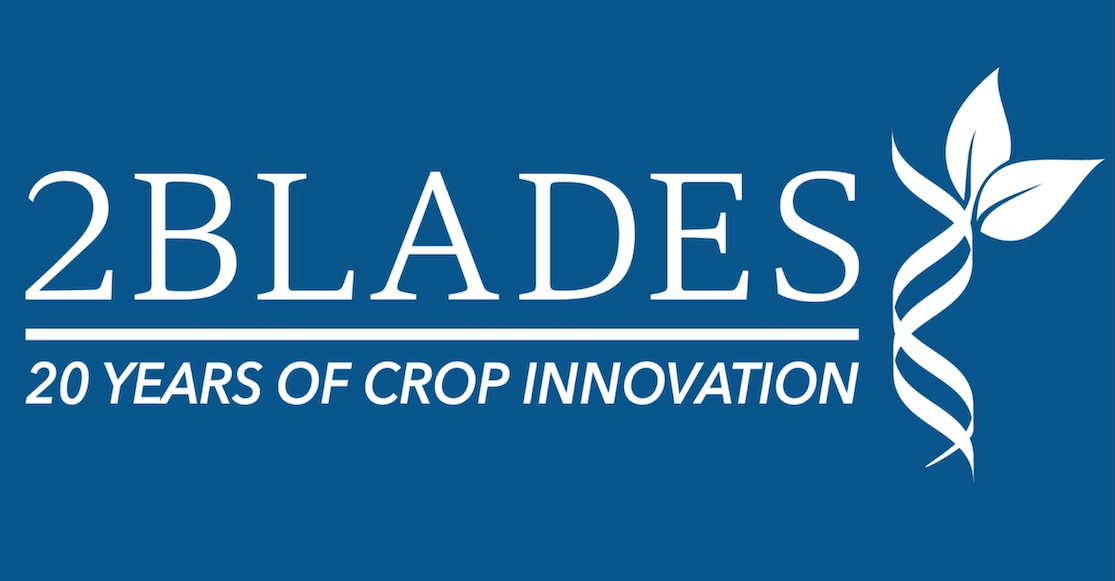
April 15, 2020
By Diana Horvath, 2Blades Foundation

It’s no longer hard to imagine: a highly virulent pathogen spreads through susceptible individuals over ever-larger areas, aided by global travel and trade, threatening the lives of millions of people.
Except this scenario is not about a disease that affects people. Rather, it will attack our food crops, with very high costs in lives and treasure.
COVID-19 has demonstrated the damage that results from an unchecked disease spreading throughout our highly connected world. But most people are unaware that plants also succumb to infectious diseases, reducing global crop yields by 15 percent or more, and costing at least $220 billion every year.
While many plant diseases cause only minor damage or are controlled with agrochemicals, there are unmanaged diseases that cause 70-80 percent losses or even failure of an entire crop.
Crop losses due to plant disease have occurred throughout history, contributing to famines and disruption — in India in the 1940s (brown spot disease in rice), Ireland in the 1840s (late blight potato disease), and going back to ancient Rome (wheat stem rust).
The threats to crops are greater today because our food systems rely on fewer crops, planted at high density, over wide areas, with great homogeneity, providing an attractive buffet for pathogens. The long list of bacteria, viruses, fungi, and other microbes that attack our top staple crops (wheat, rice, corn, potatoes) as well as our fruits and vegetables, requires us to be vigilant and proactive against these threats.
Plant diseases not only cause food losses, they also waste inputs — of seed, water, and fertilizer to nurture the crop — as well as the additional costs of labor, chemicals, and environmental impacts to fight disease.
For developing countries, plant disease means less food for farm families and their communities, impacting their incomes, nutrition, and health. The resulting scarcity and higher food prices can drive economic instability, civil unrest, and migration.
Today as food flies off grocery shelves, agricultural production and its supply chain are under special pressures, from shortages in stores, a reduced labor force on the farm and in the distribution system, to quarantines and closed borders. Crop diseases, if left unchecked, will create a comparable crisis in the future, and could be multiplied further as warming temperatures expand their footprint.
Science provides tools to contain and limit damage from plant diseases by detecting and treating infected crops. Yet, as with human pandemics, the best and least harmful option is to prevent plant disease by developing disease-resistant crop varieties.
At the 2Blades Foundation, our scientists manage and advance lab research into field trials to develop disease-resistant crop seeds for agriculture, with a special aim of benefiting smallholder farmers in developing nations. In our 15 years of work we have made major contributions toward the development of disease-resistant varieties of wheat, potatoes, corn, soybeans, and other crops — to help protect harvests and improve farmers’ income, nutrition, and health, while reducing dependence on chemical pesticides.
Because such research often takes a decade or longer to result in a new disease-resistant seed variety, policymakers must act now to support more resources for disease research on the crops that have sustained us for centuries, and which have never been at greater risk. Senator Dick Durbin, and Congresswoman Cheri Bustos recently proposed increases in agriculture research to address current and future challenges in food production, and this is a welcome trend.
Crop disease research is even more urgent as the world adds another 2 billion people by 2050. Reducing or ending crop disease will not only help feed these new arrivals, it can help us grow the needed crops with less water, land, and chemicals now required to nurture and protect our food crops.
As with COVID-19, the best way to respond to a crop disease pandemic is to be prepared well in advance. If we make the critical investments now we can protect our agriculture bounty, not just for ourselves but for generations to come.
 2Blades
2Blades